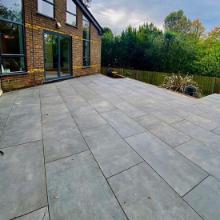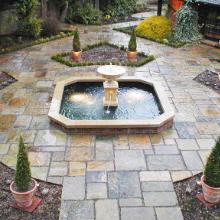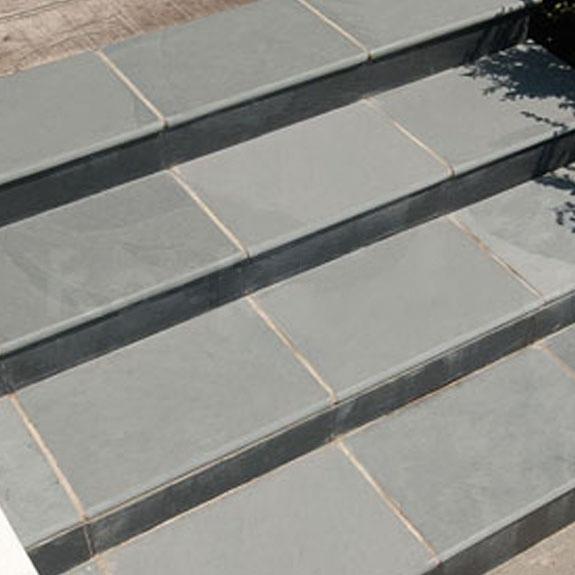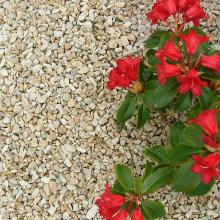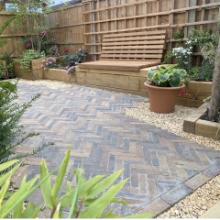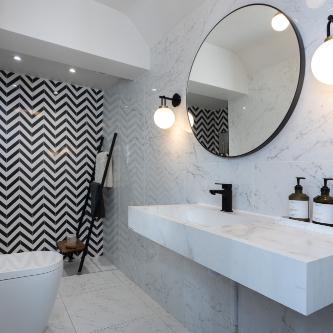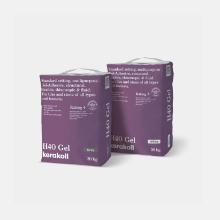Porcelain paving delivers exceptional durability, precision, and resistance to weathering, but these benefits depend on correct installation. Because porcelain tiles are non-porous (absorbing less than 0.5% water), they do not form a natural bond with standard mortar. A carefully designed mortar bed and bonding method are essential to ensure long-term stability.
Begin with a well-compacted sub-base, typically 100–150 mm of Type 1 MOT (graded crushed aggregate base), laid over firm, well-drained ground. Compact the base in layers and maintain a gentle fall of between 1:80 and 1:60 to promote surface drainage.
The mortar bed itself should be continuous — never spot-bedded — and generally laid at a depth of 30–50 mm. A 4:1 or 5:1 sharp sand (coarse sand) to cement mix creates a dense, strong bedding layer.
However, in many garden and patio applications, a weaker 1:6 mix offers advantages. The
slightly more open structure allows moisture to dissipate through the bed, reducing the risk of freeze–thaw damage while still providing ample compressive strength to support the 20 mm porcelain slabs. This balance of strength and breathability helps maintain long-term stability, particularly in areas where surface drainage may be limited.
Before placing each tile, apply a bond bridge slurry — typically an SBR (styrene-butadiene
rubber) - enhanced compound or a proprietary porcelain primer — to the back of the slab. This ensures a strong mechanical bond between the porcelain and the mortar bed, compensating for the tile’s low porosity.
After the paving has set, joints can be filled using a variety of systems. Traditional cement-based pointing remains reliable for heavily trafficked areas and where permeability is not an issue, but must be applied carefully to prevent staining. For patios and walkways, modern brush-in jointing compounds such as GFTK are widely used.
These epoxy and resin-based materials are easy to apply, permeable, and provide a neat, long-lasting joint that resists weed growth and cracking.
When laid correctly — on a full, continuous mortar bed with an SBR bond bridge and a suitable jointing compound — 20 mm porcelain paving provides an exceptionally hard-wearing, frost-resistant surface that will remain stable and attractive for decades.
